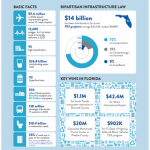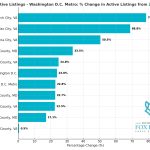
Reassessing Digital Consent in the Age of Home Improvement
In today’s digital world, the cookie consent message that pops up every time you log on to a website might seem as mundane as the daily chores around your home. However, much like maintaining or remodeling your house, making a decision about data tracking and privacy settings involves managing several tricky parts and tangled issues. It is an experience that many of us find intimidating—even if we’re experts at fixing leaky faucets or sprucing up our backyards. In this editorial, we’ll take a closer look at how the messages we encounter online, similar to familiar home improvement projects, are loaded with hidden complexities that can either empower us or leave us feeling overwhelmed.
Decoding Cookie Consent: The Digital Doormat at Your Door
Just as a welcome mat signals that guests are entering your home, a cookie consent banner is the digital front door of any website. When you see a message that reads, “Before you continue to YouTube,” followed by a detailed explanation of how cookies and tracking work, it can feel like you’re being handed both a set of house keys and a code to a security system. The message outlines the benefits of accepting cookies—like smoother navigation and personalized content—but it also warns of potential privacy trade-offs. This balance between convenience and oversight is not unlike deciding whether to invest in smart home devices that monitor energy use or improve security.
Key Elements of a Cookie Consent Message
Taking a closer look at these notifications reveals several critical components, each with its own set of little details and subtle parts:
- Data Collection and Service Maintenance: Websites use cookies to deliver and maintain services, much like a well-oiled HVAC system keeps your home comfortable.
- Protection Against Misuse: Similar to having a home security system that tracks unusual activity, cookies help guard against spam and fraud.
- Measuring Engagement: Just as you might track household expenses or energy use to optimize your utility bills, websites analyze audience engagement to enhance service quality.
- Personalization Choices: Much like décor choices tailored to personal taste, personalized content and ads aim to provide a customized experience.
It is important, therefore, to figure a path through these digital disclosures by understanding not only what is collected but also how it is used. Much like reading the fine print on a home warranty, digesting these details can help you avoid unexpected surprises later on.
Privacy Choices: Finding Your Way Through Online Options
Anyone who’s ever tried to decide on a kitchen remodel knows that change and customization are full of tricky parts and occasional nerve-racking debates. Whether it is the selection of countertops or the layout of a living room, the process can be intensified by the range of available options. In the digital world, the choice to “Accept all” or “Reject all” cookies echoes that experience.
When you choose to “Accept all,” you’re essentially opting into a system that uses your data to not only enhance your user experience but also serve you ads, measure engagement, and develop new services. On the other hand, opting out by selecting “Reject all” might mean you miss out on features that are super important to your online convenience, much like choosing to forego modern appliances in your home renovation.
Pros and Cons: A Practical Table of Privacy Preferences
| Option | Benefits | Considerations |
|---|---|---|
| Accept All |
|
|
| Reject All |
|
|
Much like choosing between budget-friendly materials or premium finishes for your home project, the decision between accepting and rejecting cookies depends on your priorities. Are you willing to trade a bit of personal data for a smoother, more tailored experience, or is safeguarding your privacy your top concern? It is a choice that requires careful thought, understanding the subtle details of the digital landscape.
How Cookie Policies Reflect Broader Digital Trends
The cookie consent message is emblematic of many broader issues in the digital realm. It represents an ongoing tug-of-war between user convenience and data privacy. Websites are continually upgrading their processes to offer a more streamlined experience, much like a homeowner invests in modernizing their kitchen or upgrading their security system. Both instances require you to decide what aspects of your routine life you are willing to adjust or improve for the sake of modern comforts.
Digital service providers, such as Google and YouTube, often use similar language to explain their data collection strategies. They stress that the data collected through cookies is used not only to improve their services but also to ensure safety and reliability. This dual nature of technology reflects a similar tension in home improvement: the desire to upgrade, improve, and secure, while contending with a set of practical and sometimes intimidating details.
Aligning Digital and Home Improvement Priorities
While it might seem unusual to compare digital privacy with home improvement, the underlying principle in both areas is clear: making informed choices leads to better outcomes. Consider the following parallels between digital consent processes and home services:
- Customization: Just as you might choose specific paint colors or floor designs, you have the opportunity to tailor your online experience through privacy settings.
- Evaluation of Trade-Offs: Homeowners weigh the cost versus the quality of materials. Similarly, online users evaluate the benefits of personalized content against data-sharing risks.
- Ongoing Maintenance: Regular updates and home maintenance keep your residence running efficiently, much like periodic reviews of your privacy settings help protect your information.
- Balancing Act: Both areas require balancing current needs with future implications—whether it’s long-term home durability or future data security.
When you start making a decision about whether to accept or reject cookies, you are, in essence, putting on your homeowner decision-making cap: assessing future benefits and current sacrifices. It comes down to managing your way through a maze of detailed choices.
Understanding the Impact on Everyday Digital Experiences
Many of us have felt the sting of sliding through a cookie message page right when we’re about to watch our favorite video or find a helpful home improvement tutorial online. This uninvited intermission may feel off-putting, yet it plays a critical role in shaping our online experiences. It’s much like encountering unexpected repair work during a home renovation—you’re forced to pause and consider the extra costs and adjustments that need to be made.
This interruption reminds us of the underlying presence of technology in every facet of modern life. The choice to accept or reject cookies is not merely about digital convenience but also about taking a stand regarding privacy. For homeowners and DIY enthusiasts, it can be as nerve-racking as spotting a leak in the attic or discovering moisture damage behind a newly painted wall.
Real-Life Scenarios: Cookie Settings Affecting Online Behavior
Consider the following examples, presented in a table format, to understand how different cookie settings might influence your online journey:
| Scenario | Accepting Cookies | Rejecting Cookies |
|---|---|---|
| Watching Home Maintenance Videos |
|
|
| Browsing Home Improvement Blogs |
|
|
| Shopping for Tools and Materials |
|
|
These choices not only shape the immediate user experience but can also have longer-term implications for how online services evolve. In the same way that regular home maintenance prevents small issues from becoming overwhelming, regulating your digital privacy settings can save you from larger problems in the future. It’s all about spotting the subtle details and making choices that better align with your lifestyle and priorities.
Taking a Closer Look at the Fine Points of Data Use
A major portion of today’s cookie consent messages revolves around how data is used—not just collected. This means tracking audience behavior, measuring engagement, and even developing new services. The language used often emphasizes that these actions help in creating a more personalized experience for each user. However, beneath this promise of a tailored service lie several little twists and subtle distinctions that are worth exploring further.
For instance, the promise of “video recommendations” and a “customized homepage” might seem appealing at first glance. But, much like choosing the right type of insulation for your home, the decision involves an understanding of trade-offs. Accepting these recommendations might improve your experience, yet it also means your online behavior is constantly being recorded, much like having an ever-watchful home surveillance system. The balance between benefit and oversight is a recurring theme in both home improvement projects and digital privacy management.
Bullet Points: What to Consider About Data Use
- Data Personalization vs. Privacy: Weighing the benefits of customized content against the need to maintain a level of discretion.
- Service Improvement vs. Data Excess: Understanding that while data helps in refining services, too much collection can feel invasive.
- Informed Consent vs. Blind Acceptance: Recognizing the importance of reading and understanding privacy policies—much like reviewing a home warranty before signing on the dotted line.
- Trust vs. Transparency: Evaluating whether the convenience offered is worth the exchange of personal details.
By taking the time to break down these components, users can better steer through the landscape of digital privacy. It is as crucial as assessing whether a home’s outdated wiring should be replaced to prevent future hazards. Both scenarios demand attention to detail and patience to cope with the intricate bits that might appear overwhelming at first.
Bridging the Gap Between Digital and Physical Worlds
What might initially seem like an isolated issue confined to online interactions actually has broader repercussions in our everyday lives—all the way to our homes. Home improvement enthusiasts are particularly attuned to the nuances of maintenance and renovation, often learning through hands-on experience what it means to manage a project that is riddled with tension and small twists.
Similarly, online privacy and cookie policies are intertwined with our every digital move. When we accept cookies, we invite a series of adjustments similar to changing the layout of a room: there are benefits, such as improved functionality and a personalized environment, but there are also trade-offs that may not always be obvious from the start.
Parallel Lessons from Home Projects
Drawing parallels between digital consent and home improvement projects can help demystify the process of making informed decisions. Here are a few lessons that curb the apprehension associated with both:
- Preparation is Key: Just as you wouldn’t start a basement renovation without a detailed plan, don’t click “Accept all” on cookies without knowing what you’re getting into.
- Understanding the Trade-Offs: Be aware of both the advantages and the potential inconveniences that come with each choice, whether it’s a new countertop or sharing data online.
- DIY Research: Always take a closer look at the small distinctions—read the privacy policies and assess them as thoroughly as you would review the pros and cons of different home insulation materials.
- Maintenance Matters: Just as routine home maintenance prevents costly repairs, periodically revisiting your digital privacy settings ensures your information remains secure.
It is essential to recognize that even when faced with nerve-racking choices, being proactive rather than reactive ultimately leads to better outcomes. Whether you are replacing an old water heater or updating your browser’s cookie settings, the emphasis should be placed on making choices that safeguard your interests while offering a degree of flexibility and modern convenience.
Adapting to an Ever-Changing Digital Landscape
The digital landscape is constantly evolving, much like the trends in home design and technology. Every update—from new privacy protocols to redesigned user interfaces—brings with it a set of challenging bits that you must figure a path through. For homeowners who are accustomed to tackling the twists and turns of a renovation project, adapting to these changes can become a familiar process over time.
Developers and service providers work hard to innovate and streamline their offerings, assuring users that the data collected is primarily intended to enhance functionality and customize your experience. Yet, this assurance often coexists with the knowledge that monitoring and data tracking are ongoing processes, requiring a careful balancing act. Much like mixing old and new design elements in your home, this integration demands a delicate, thoughtful approach.
Strategies for Staying Informed and In Control
For those looking to maintain autonomy over their digital experiences, consider adopting the following strategies:
- Regular Reviews: Just as you would schedule annual home inspections, take time to review your privacy settings periodically. Familiarize yourself with any changes in cookie policies.
- Educate Yourself: Engage with articles, tutorials, and trusted sources that explain the fine shades between different data policies. Knowledge is as much your ally in managing digital privacy as it is in home repair.
- Use Tools and Extensions: Leverage browser tools and extensions designed to help you control cookie usage—much like using smart home devices to monitor energy use or security.
- Consider Professional Help: At times, the subtle details of privacy policies can be as confusing as deciphering building codes. Don’t hesitate to seek guidance from digital privacy experts, similar to how you would consult a contractor for home renovations.
By implementing these strategies, you can work through the often intimidating process of managing your online presence. The experience can become less about making blind choices and more about developing a tailored, informed approach that suits your personal comfort level, just as you might customize your home renovation to match your lifestyle and needs.
A Final Word on Digital Transparency and Home Service Value
In conclusion, the cookie consent message—replete with options like “Accept all” and “Reject all”—serves as a potent reminder of the broader challenges and hidden complexities in the digital universe. This message is not unlike a blueprint you might receive before starting a new home improvement project: it outlines the available features, emphasizes the benefits, and warns about potential trade-offs.
As home improvement experts and avid DIY enthusiasts, we understand that every decision, no matter how overwhelming it may seem initially, is an opportunity to learn and grow. The process of evaluating cookie consent choices is filled with twisting, turning details that require a mix of careful thought and proactive engagement—qualities that are just as critical when tackling a home remodel or planning an outdoor yard project.
Much like updating an aging electrical system or installing new windows, managing your digital privacy settings involves paying close attention to the little details that can make a world of difference over time. With the right preparation and a willingness to dive into new information, you can steer through any nerve-racking aspects of online data collection with confidence.
In our modern, interconnected world, maintaining both our physical and digital spaces demands a similar level of care and planning. Whether you’re choosing to install the latest home automation system or deciding whether to share personal data for personalized online experiences, remember that every decision has its own set of benefits and trade-offs. Approach each choice with the same thoughtful analysis you’d apply before beginning any major home improvement project.
By embracing these challenges and being fully informed, you not only protect your privacy but also enhance your overall digital experience—ensuring that, like a well-maintained home, your online presence remains secure, efficient, and enjoyable. As we continue to innovate and improve, let us take pride in our ability to remain adaptable, informed, and ready to tackle even the most tangled issues, both in our homes and in our digital lives.
Reflecting on the Future: A Harmonious Blend of Home and Digital Security
Looking ahead, it is clear that both home improvement and digital privacy will continue to evolve hand in hand with technological advancements. Just as sustainable building materials and energy-efficient systems become more common in neighborhood renovations, so too will digital privacy practices adapt to meet new challenges in data usage and protection.
This evolution is full of twists and turns that require us to stay informed and actively involved. For the modern homeowner, staying abreast of these developments is as essential as keeping up with seasonal home maintenance. As industries converge and boundaries blur, the skills you need to manage your living space—be it physical or virtual—are more intertwined than ever before.
The cookie consent message, with its multifaceted layers and inherent trade-offs, is a microcosm of the larger conversation about control, personalization, and responsibility in our increasingly digital lives. By applying the same thoughtful, detail-oriented approach to our online interactions as we do to our home projects, we equip ourselves to not only embrace innovation but also safeguard our privacy and preferences.
In this spirit of proactive adaptation, let us continue to champion transparency and informed decision-making in all aspects of our daily lives. Whether you’re a seasoned DIY expert renovating your beloved home or simply navigating the choices presented on your favorite website, remember that every detail matters. By putting in the effort to understand and manage the subtle parts of both home improvement projects and digital privacy settings, you foster an environment that is robust, secure, and uniquely tailored to your way of life.
Ultimately, the journey of managing cookie consent isn’t a solitary one. It mirrors the community spirit found in home improvement neighborhoods—where sharing tips, insights, and personal experiences can lead to better outcomes for everyone involved. So, as you decide whether to accept or reject cookies the next time you visit your favorite online platform, think of it as another small yet significant home project. One that, when completed thoughtfully, benefits not just you but the entire digital community.
In closing, let this editorial serve as an invitation to get into the details, figure a path through the maze, and confidently embrace the challenges—both online and off. With each informed decision, you strengthen the foundations of your privacy and home life alike, ensuring that both your digital and physical spaces remain as welcoming, secure, and personalized as ever.
Originally Post From https://www.kcentv.com/article/news/local/san-saba-county-updates-the-disaster-assistance-donation-efforts-following-flooding/500-959bc0fe-b4cb-4308-898a-79d61589b534
Read more about this topic at
How to Add a Multilingual Cookie Consent Banner?
Recommended Cookie Consent plugins for multilingual sites


